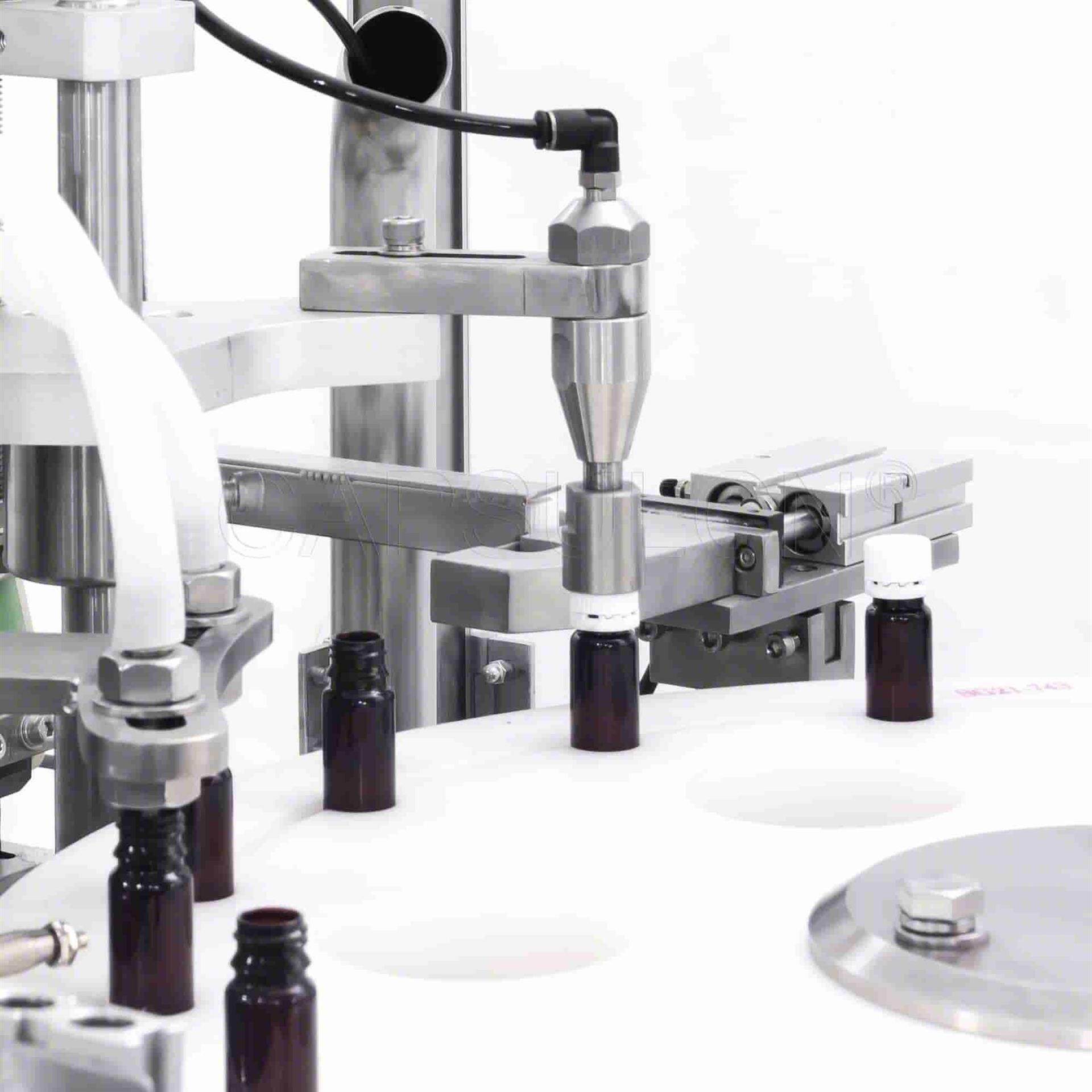What is the Working Principle of Liquid Filling Machine?
Liquid products can be found everywhere in our daily lives, but have you ever wondered how liquids are filled into various containers? Well, that’s when the liquid filling machine comes in handy. Liquid filling machines provide stability, safety, and hygiene to liquid products in an efficient manner. So, they are quite popular in the pharmaceutical, cosmetic, and food industries.

After reading this blog, you'll get a more comprehensive idea about liquid bottle filling machines, including their working principle, standard operation procedure, and common faults that may occur.
Let's start by understanding what is a liquid filling machine before delving into its working mechanics.
What Is A Liquid Filling Machine?
As the name suggests, a liquid filling machine is a device used to package liquid products. These machines are used in a wide range of industries, including food and beverage, pharmaceutical, chemical, and cosmetics.
For example, in the pharmaceutical industry, a liquid filling machine can be used to package eye drops, oral liquids, oral syrups, and disinfectants. Therefore, it needs to be reliable when it comes to hygiene and quality.
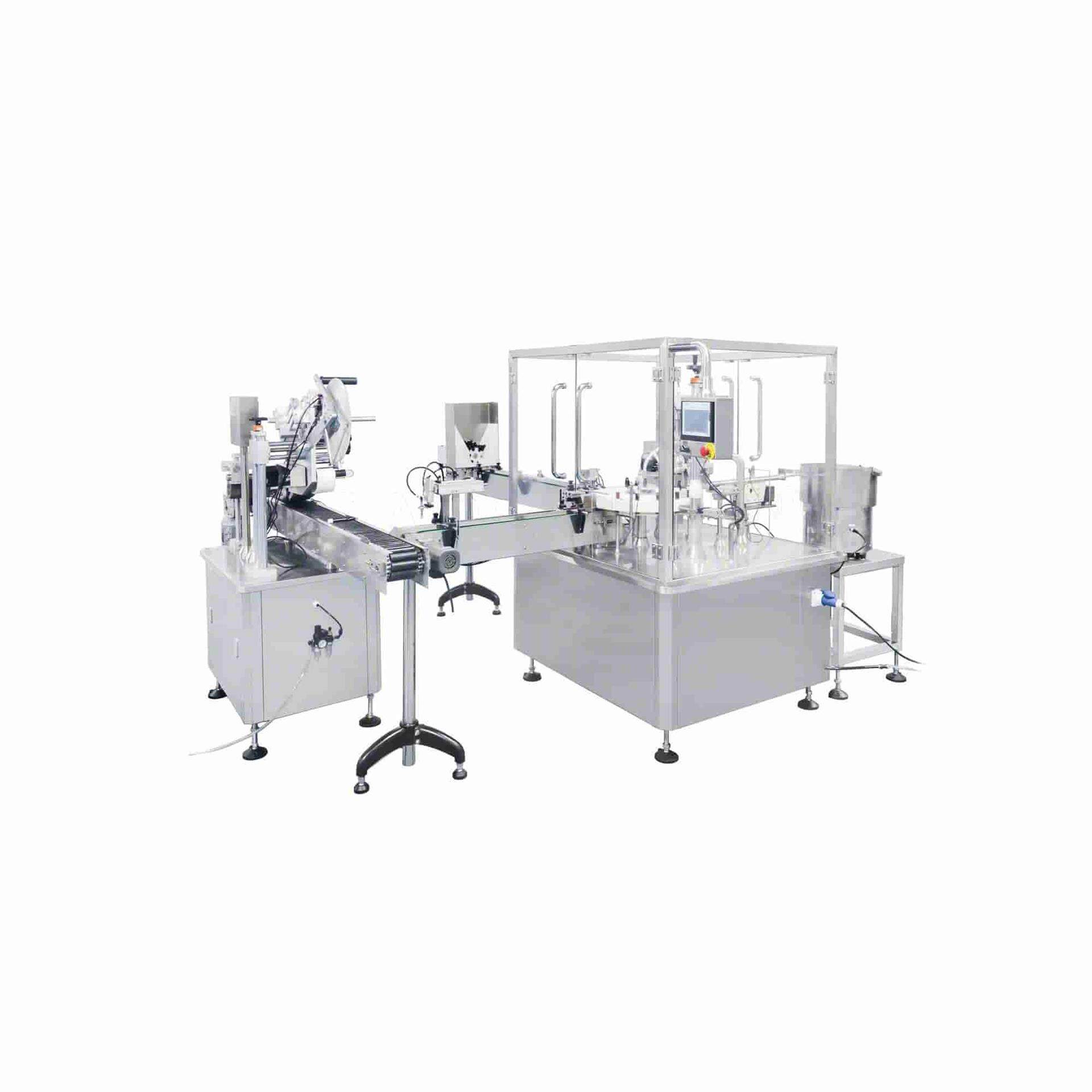
Liquid Filling Machine Working Principle
To meet the needs of different production scales, there are various types of liquid filling machines on the market, mainly automatic liquid filling machines, semi-automatic liquid filling machines, and manual liquid filling machines.
However, they all work on the same basic principle. The machine pumps the liquid product from a reservoir into the containers. The amount of liquid that is dispensed is controlled by a variety of factors, such as the size of the container, the viscosity of the liquid, and the desired filling volume.
Now let's take an insight into how the three different types of liquid filling machines work.
How Does A Manual Liquid Filling Machine Work?
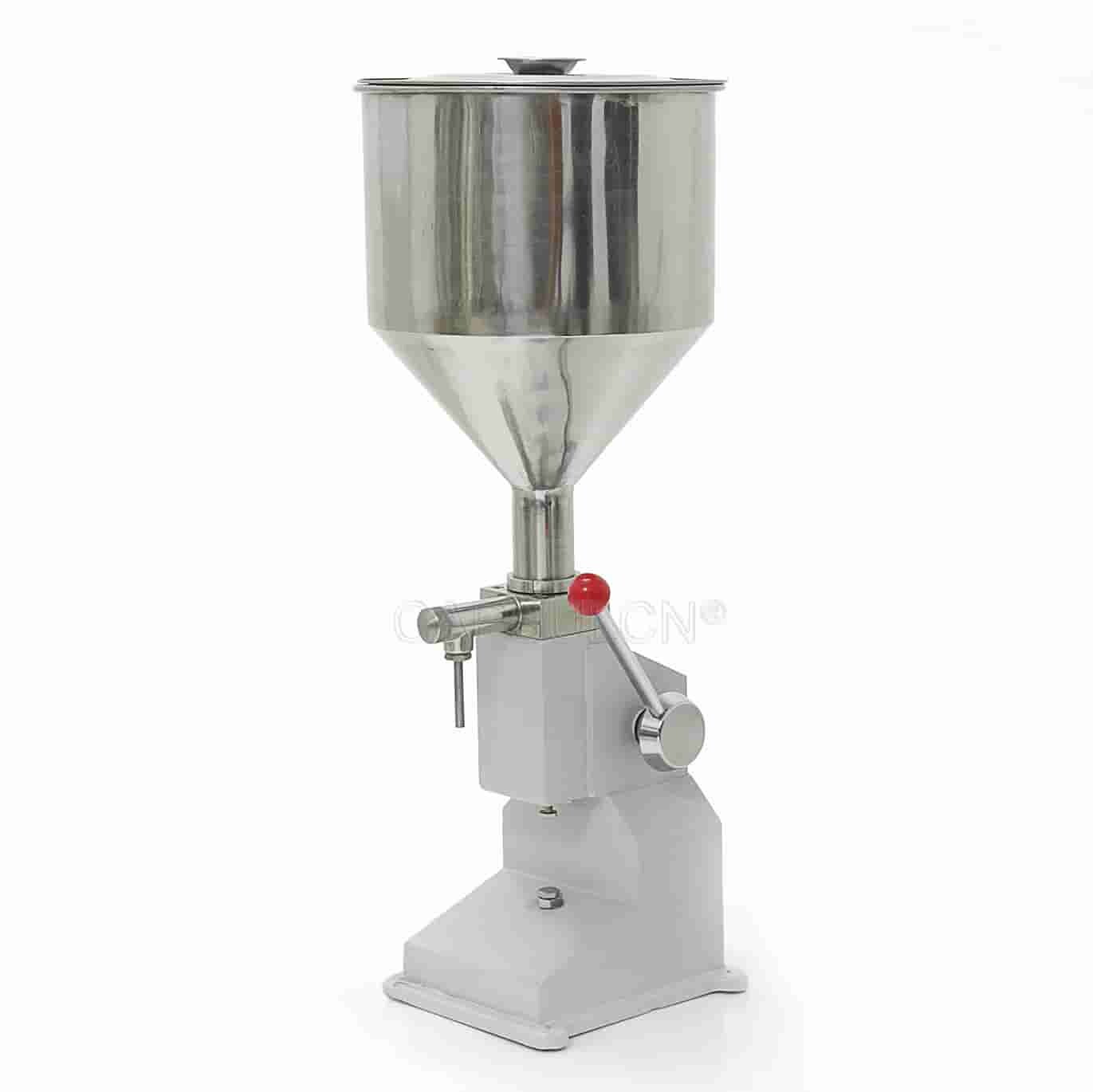
A manual liquid filling machine is a multi-functional device for the pharmaceutical, cosmetic, and food industries. Compared with other filling equipment, it does not need automation to run. So it is ideal for small business or laboratory use. Below is the working principle of a manual liquid filler:
Step 1: Pouring the liquid you want to fill
Once the filling capacity of the machine has been set, pour the liquid into the feed hopper.
Step2: Filling the bottle with the liquid
Put the bottle under the discharge nozzle with one hand and slowly press the handle with the other hand. Then the liquid will flow out of the discharge nozzle.
How Does A Semi-Automatic Liquid Filling Machine Work?
A semi-automatic liquid filling machine is a combination of manual and automatic operation. It is usually equipped with an automatic filling unit, but it also needs people to load containers and manipulate the filling procedure. Below is a breakdown of the liquid filling machine principle:
Step1: Connecting the air supply
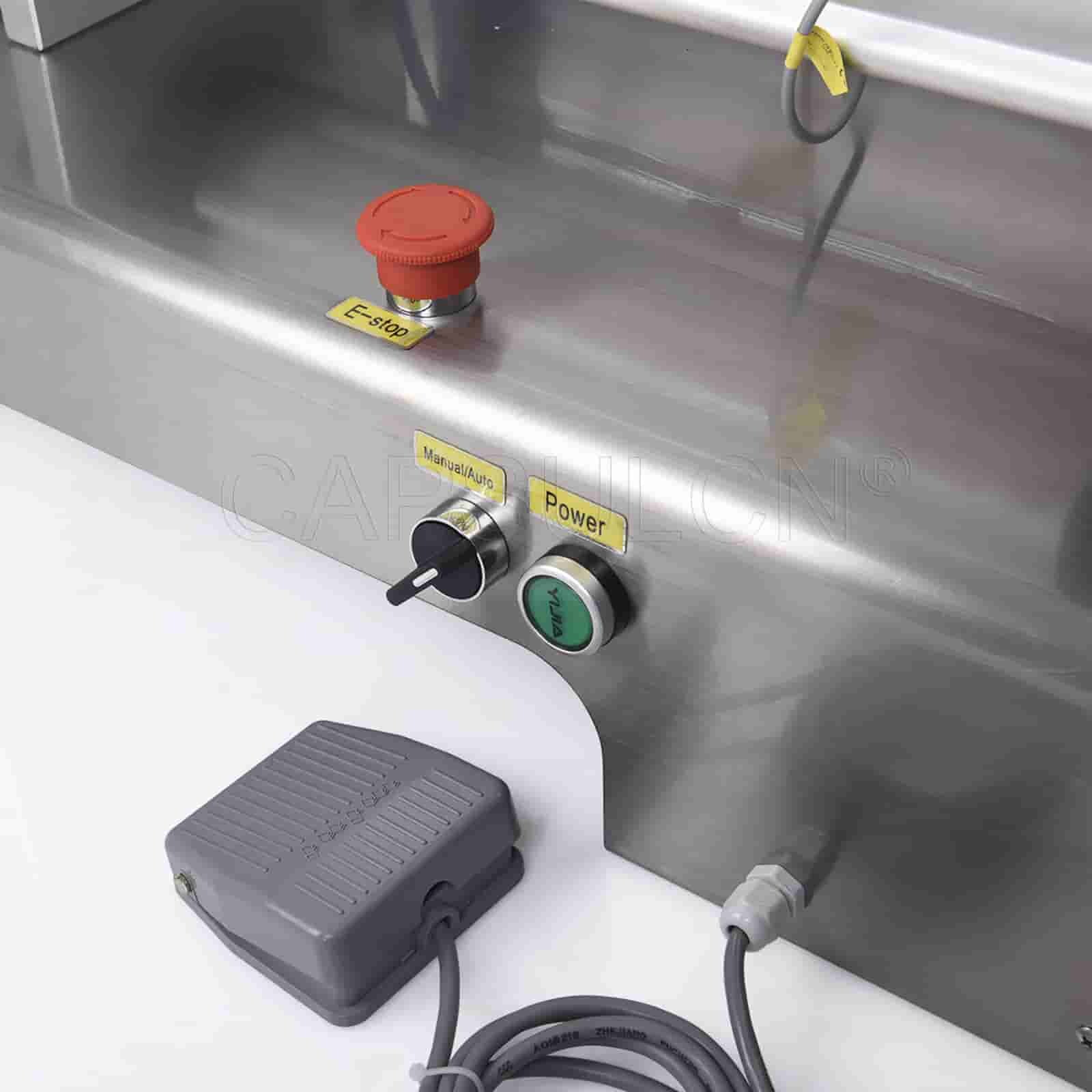
Connect the air inlet tube to the air supply and turn on the air power switch. Pulling out the air switch means closing it. In addition, you can adjust the air pressure volume by pulling out the top part of the filter and rotating it.
Step2: Adjusting the filling speed
Turn the speed adjustment valve and the filling interval adjustment valve to set the appropriate pumping speed. To avoid liquid rushing out of the bottle during filling, you can slow down the speed a little bit.
Step3: Determining the filling volume
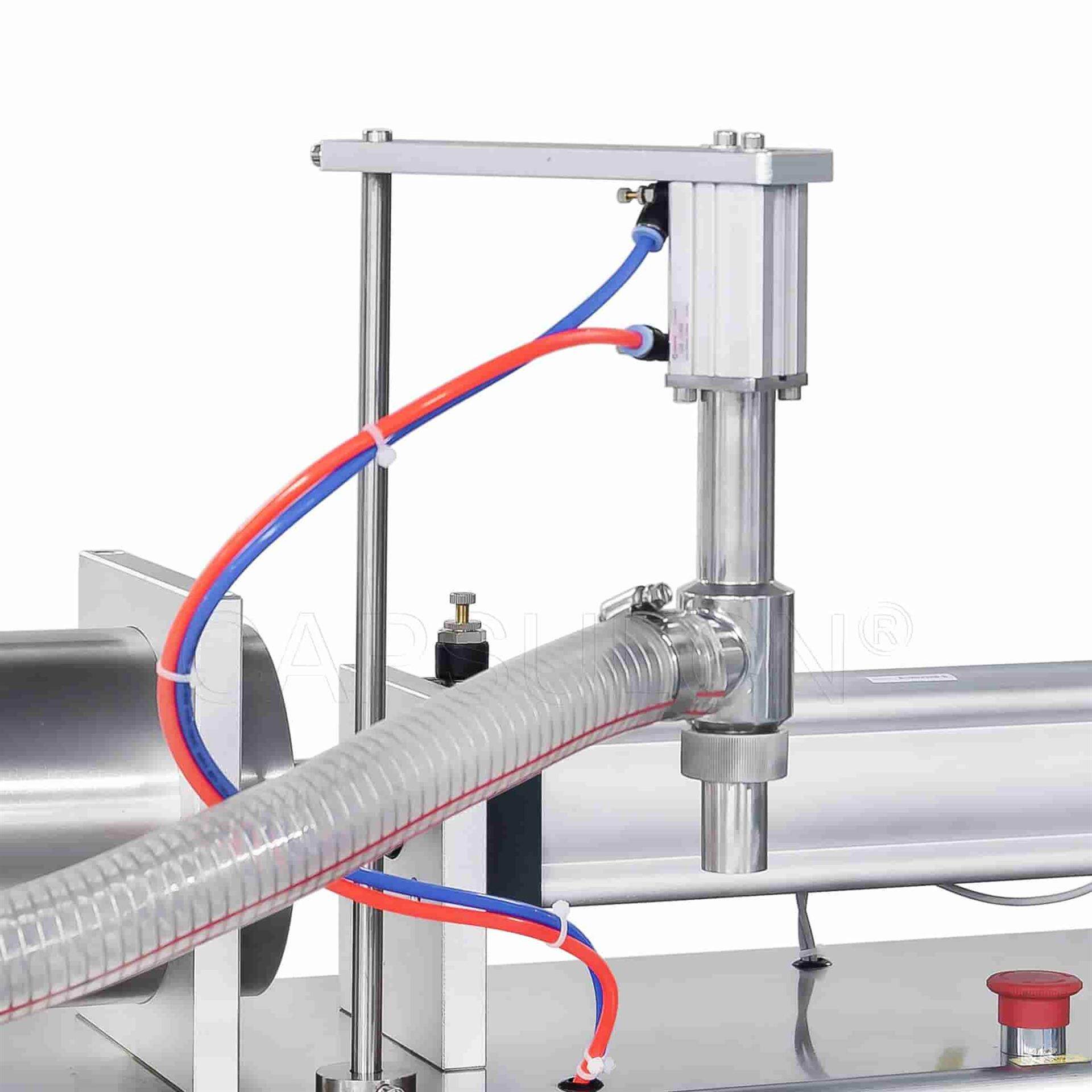
Adjust the magnetic switch position via the hand wheel on the right side of the machine, to determine the required filling volume. After that, lock the movable electromagnetic switch on the cylinder, and the filling process officially starts.
How Does An Automatic Liquid Filling MachineWork?
The automatic liquid filling machine features accuracy, efficiency, and consistency. It adopts the principle of volumetric filling, i.e. filling each container with a predefined volume of liquid. So, it can perfectly accommodate mass production in beverage, pharmaceutical, chemical, and other industries. Here is a clear description of how the liquid filling machine works:
Step1: Setting the parameters
Firstly, you have to set all parameters of the liquid filler based on the nature and viscosity of the liquid, such as the speed, temperature, and pressure of the machine.
Step2: Loading bottles into the feed hopper
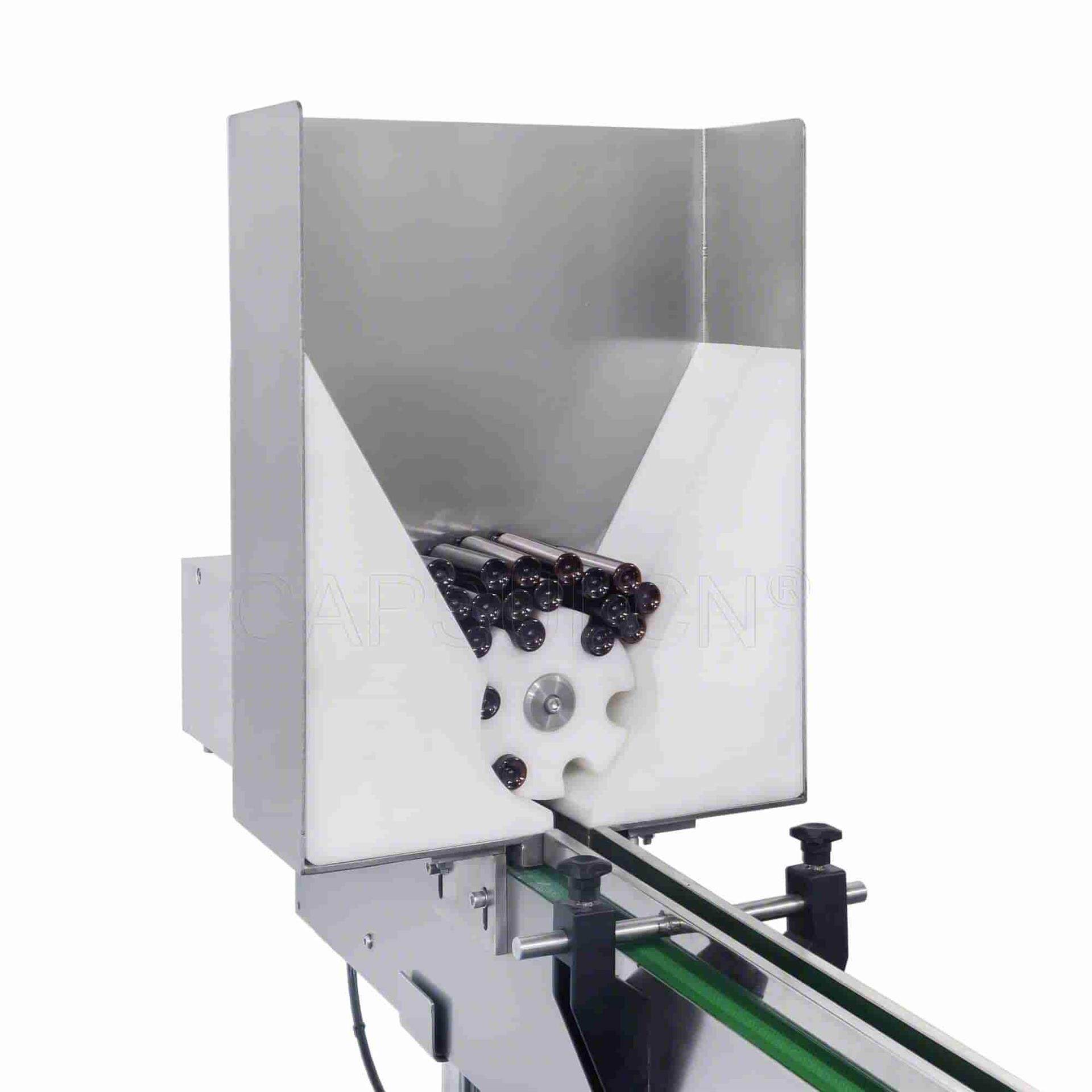
Put the bottles into the feed hopper, and as the rollers rotate, the bottles are carried one by one onto the conveyor belt, which in turn conveys the bottles to the other units for processing.
Step3: Conveying the bottles
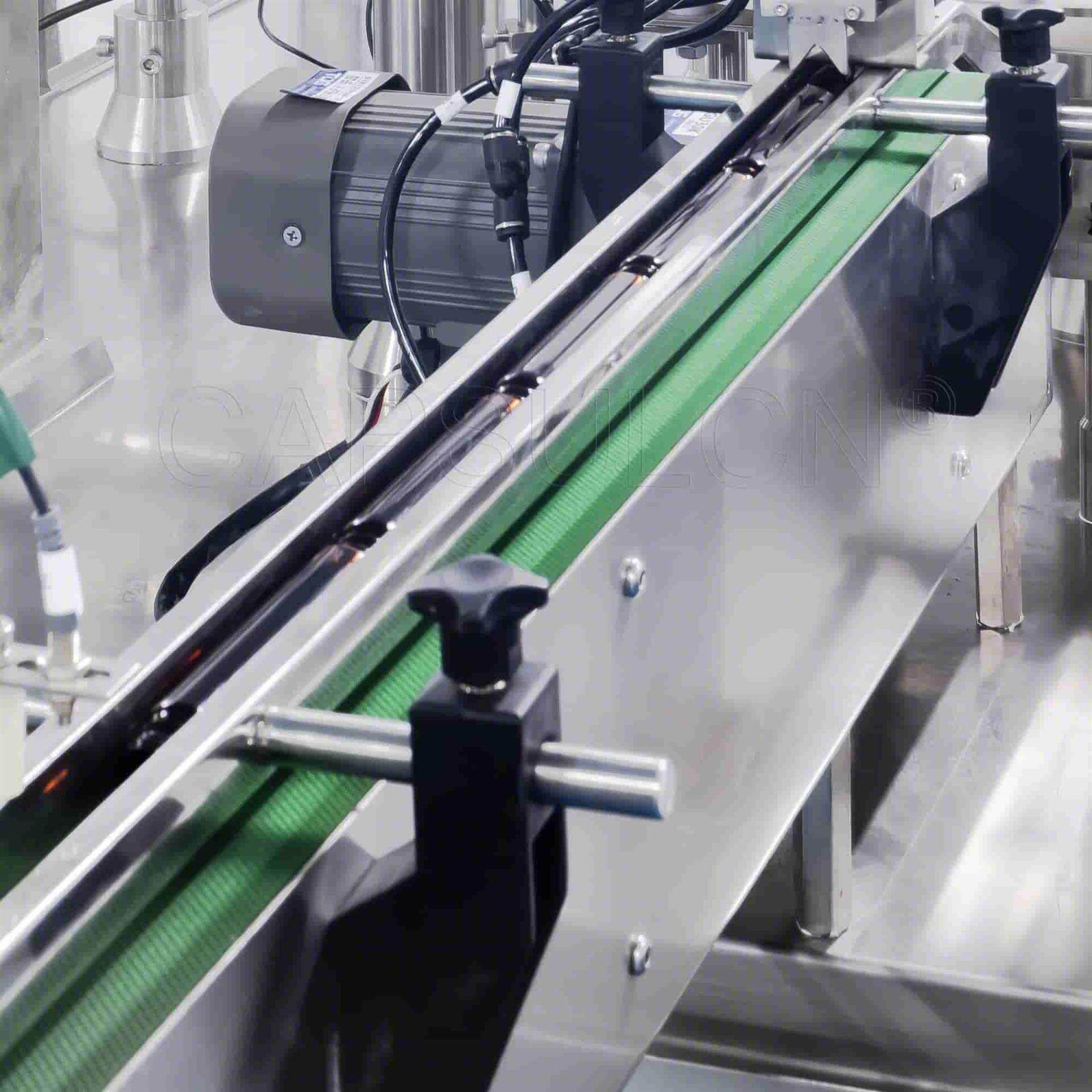
The conveyor belt serves as an integral part of the entire operating procedure of the liquid filling machine. It can adjust the spacing of the bottle stopper according to different bottle diameters, which makes sure the whole transportation process runs smoothly.
Step4: Completing the filling process
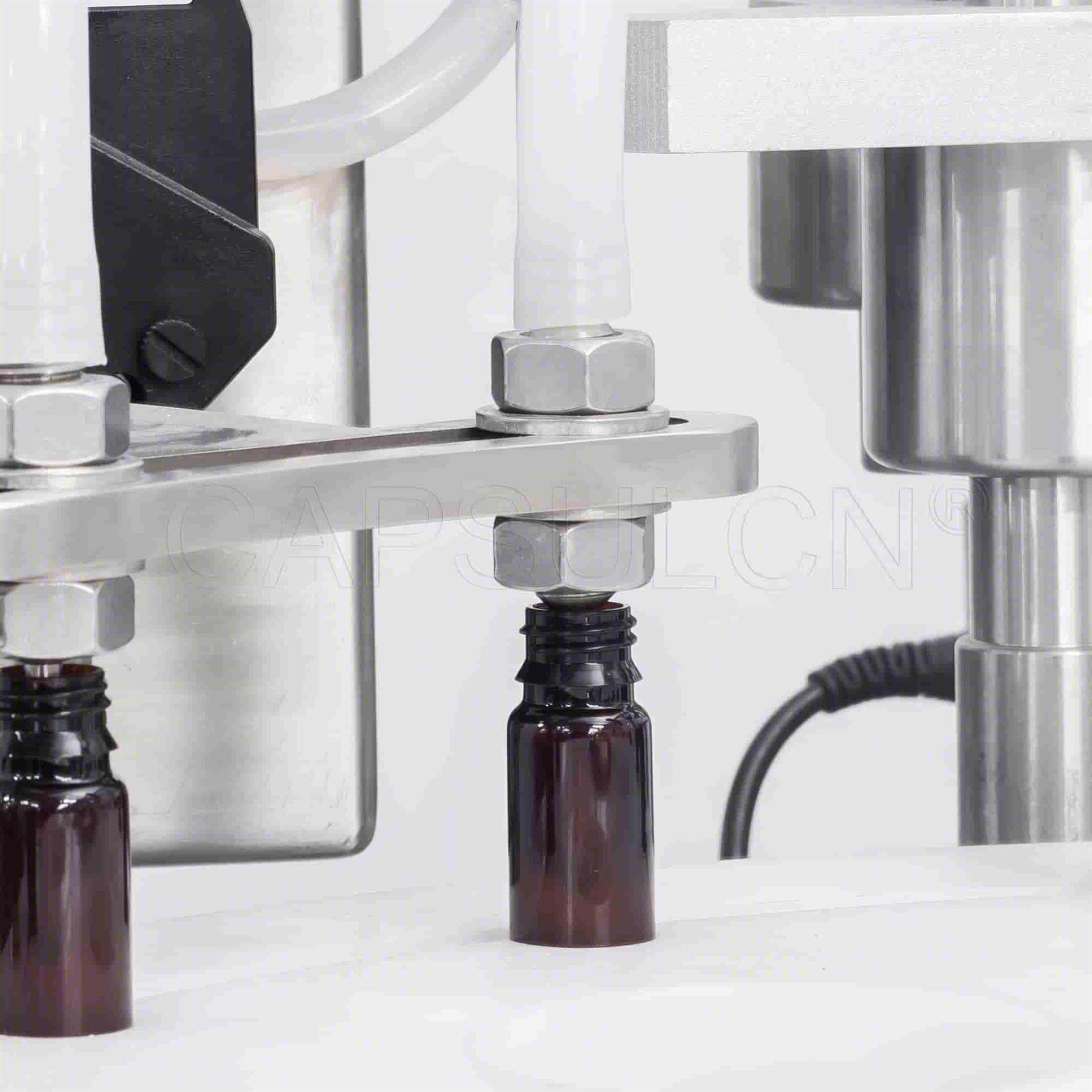
Along the conveyor belt, the bottles are delivered to the filling unit. The filling mechanism is specially designed to precisely inject the required amount of liquid into bottles. This is achieved with the help of a plunger or a rotation valve.
Step5: Capping the bottles
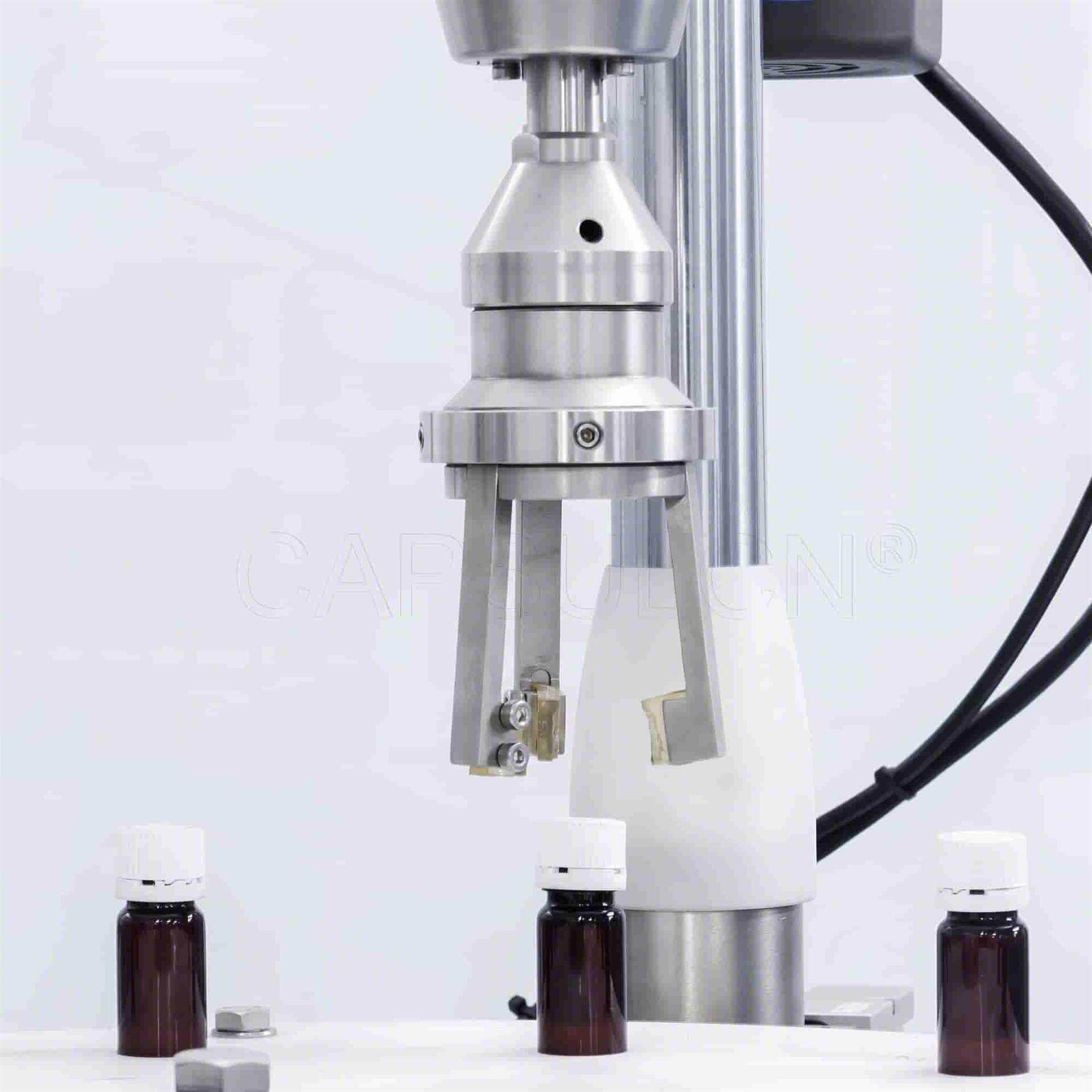
Finally, after all those steps, it's time to cap the bottles. The filled bottles are transported to the capping area. Here the bottles are capped and screwed tightly, ready for the next step of packaging and labeling.
Standard Operating Procedure For Liquid Filling Machine
Compared to manual and semi-automatic ones, fully automatic liquid filling machines are more sophisticated. They have a more complex mechanism that requires expertise and training to maneuver.
Now, you probably understand how a liquid filling machine works. But with the following SOP, you will be able to use this machine more safely and correctly. In addition, under the guidance of the SOP, the efficiency and quality of your production will be greatly improved!
Objective: Use an automatic liquid filling machine to achieve efficient and accurate filling results.
Scope: This SOP summarizes the step-by-step procedure for operating an automatic liquid filling machine.
Device And Materials:
- Automatic liquid filling machine
- Liquid to be filled
- Packaging containers
- Necessary safety kit (gloves, safety goggles, etc.)
Procedure:
Preparation:
- Check if the liquid filling machine is in good working condition and ready to use.
- Make sure that the empty bottles are clean and meet the requirements of the liquid filling machine.
- Prepare the liquid to be filled and measure the required filling volume.
Startup:
- Turn on the power as directed.
- Ensure that no required safety devices are missing.
Bottle Loading:
Load the bottles to be filled into the feed hopper. Observe your machine's loading capacity to avoid overloading.
Setting Parameters:
Set related parameters such as filling speed, temperature, and air pressure on the machine's operating panel.
Starting Filling Process:
Press the starter button to start the filling process. Adhere to the machine's operating program.
Monitoring:
- Monitor whether the bottles move smoothly on the conveyor belt. Avoid bottles from tipping over and stopping moving.
- Constantly watch over the filling process. Check for problems such as caps not aligning, cylinders not working, etc., and take timely action.
Quality Check:
Regularly check that the bottle filling volume is as required. Adjust settings as necessary to ensure accuracy.
Turn Off The Machine:
- At the end of the filling process, safely turn off the machine according to the manual.
- Clean up the liquid left in the machine and properly discard waste material.
Cleaning And Maintenance:
- Use proper detergents. Follow the user manual of the machine to keep all components and assemblies clean.
- Maintain the machine regularly according to the schedule.
Logging:
Record the filling process in a file or log, including lot number, quantity filled, operator name, and any problems.
Note:
Follow operating instructions and safety precautions at all times. Seek advice from a certified technician if you have any technical questions.
Reference:
- Automatic liquid filler user manual
- Related security rules and instructions
Common Faults Of Automatic Liquid Filling Machine
Automatic liquid filling machines are complex machines that can be prone to faults. However, many of these faults can be easily troubleshooted and resolved. Here are some common liquid filling machine faults and troubleshooting tips:
|
Fault |
Troubleshooting |
|
Cylinder does not work |
Check for proper air pressure, air hose leakage, and cylinder elements |
|
Poor bottle transport |
Adjust the spacing and elasticity of conveyor belt |
|
Filling head can't align with the bottle opening |
Adjust the spacing and height of filling needle |
|
Vibration during machine work |
Check if the chain fasteners are loose |
|
Incorrect filling volume |
Check for worn silicone seals, leaking one-way valves, and loose tubing connections. |
|
Inaccurate capping |
Make sure the center of bottle is aligned with that of the gland opening and the air pressure is normal. |
The Bottom Line
Liquid filling machines play a vital role in the pharmaceutical industry. Understanding the principle of liquid bottle filling machines can improve your medicinal packaging productivity and take your pharma business to the next level.
Leave your comment
Also Offers


Containment Automatic Capsule Filling Machine SFK-703

Fully Automatic Dosator Capsule Filling Machine CZ-40

Our Team
As an expert in the pharmaceutical and pharmaceutical packaging industry, iPharMachine has provided solutions for hundreds of pharmaceutical and health product manufacturers for 17 years. By visiting customers, we get good reviews from our customers.
- info@ipharmachine.com
- English Español Deutsche
